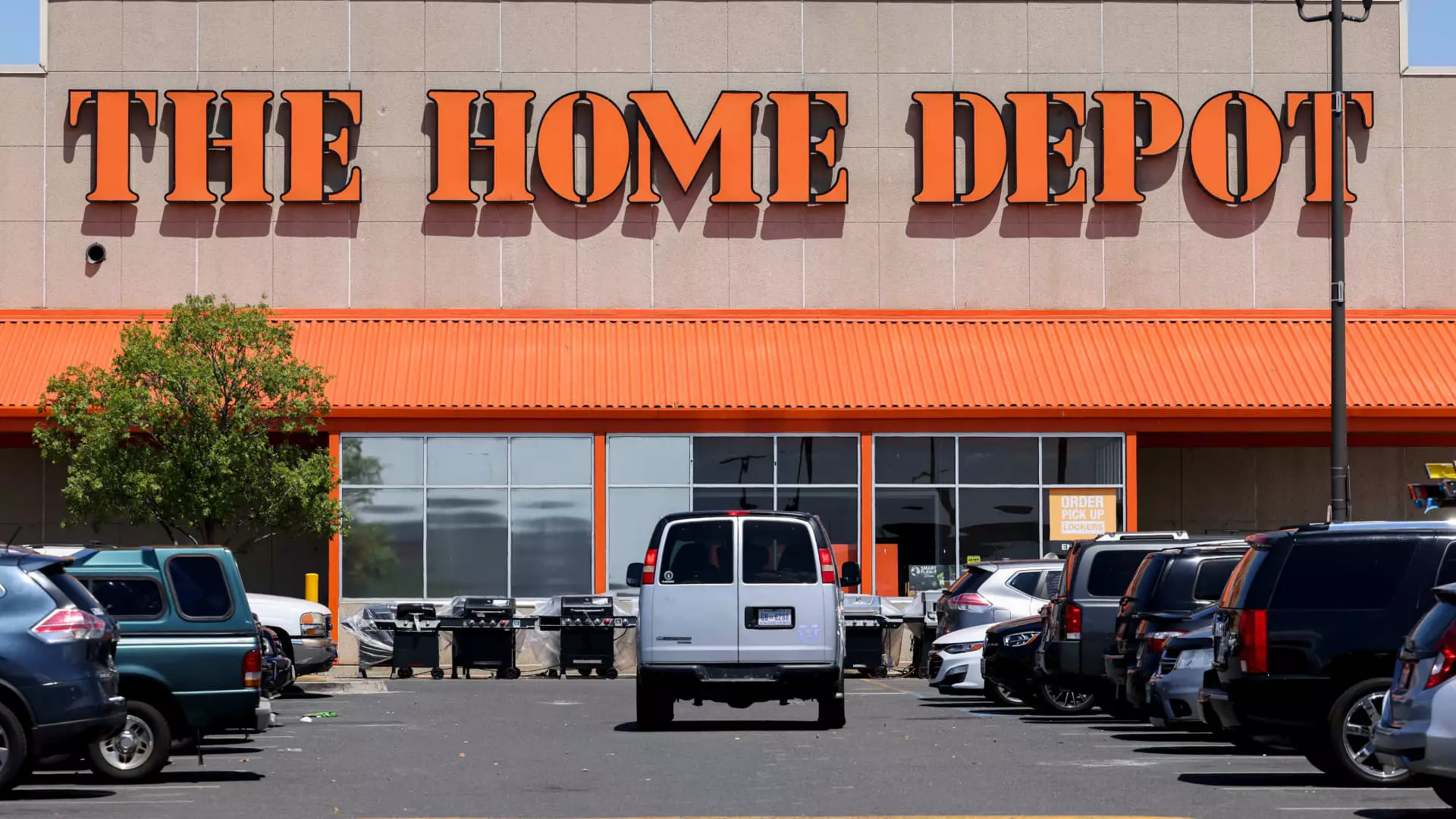Recently, the housing market has been rife with uncertainty, particularly due to fluctuating interest rates that significantly affect consumer spending and investment patterns. Amidst this backdrop, our decision to invest in Home Depot shares was strategically made to leverage potential improvements in the housing sector. Initially, we acquired 50 shares at around $362 each, a move that may appear opportunistic in light of the current market climate. We followed this up with an additional purchase of 50 shares a couple of days later, albeit at a slightly higher price point. Despite Home Depot’s performance being somewhat lackluster—with an annual gain of about 7% in contrast to the S&P 500’s impressive 16%—our focus remains on longer-term potential rather than short-term volatility.
The first half of 2023 saw Home Depot’s stock soar to $395 in March due to investor optimism surrounding potential Federal Reserve interest rate cuts, only to plummet to a low of $325 in May as that optimism waned. The reality of rising bond yields and inflation readings rattled investors, prompting a reassessment of expectations. Currently, the stock remains notably below its peak—$415 in late 2021—a point reached when the pandemic had compelled many to invest in home improvement. This peak coincided with the onset of the Fed’s aggressive rate hike strategy initiated in March 2022.
As we evaluate the potential for Home Depot’s recovery, we must acknowledge the projected decrease in interest rates anticipated in the upcoming Fed meetings. This scenario is particularly advantageous for Home Depot, which thrives during periods of increased housing turnover. Historical data suggests that mortgage rates between 5% and 6.5% are critical thresholds for stimulating significant market activity. Comments from Home Depot’s CEO, Ted Decker, during recent earnings calls, indicate a resurgence in mortgage activity when rates dip below these levels, signaling a correlation that investors should not overlook.
As of last week, mortgage rates dipped for the sixth consecutive week, settling at 6.29%. This reduction has been met with a modest but promising uptick in mortgage demand and refinancing applications, showcasing a potentially fruitful trend. Despite these positive signs, potential buyers remain cautious, waiting for more pronounced reductions—potentially leading to rates falling below 6%.
Notably, Toll Brothers CEO Doug Yearley projected on CNBC that if the Federal Reserve implements three rate cuts this fall, mortgage rates could indeed drop below 6%. If such trends materialize, we may witness a pronounced surge in housing market activity that could significantly benefit Home Depot. However, it’s vital to understand that a lag usually exists in the correlation between lower mortgage rates and immediate business improvements for Home Depot, as the home buying process takes time.
Despite the prevailing concerns regarding the health of the U.S. consumer, our faith in Home Depot is reinforced by the unique relationship between rising home values and the home improvement market. Effective July 2023, home equity has reportedly increased by nearly $18 trillion since 2019, offering a substantial reservoir of financial resources that homeowners can tap into to fund renovations and improvements. The prevalence of home equity lines of credit (HELOC), currently estimated at $11 trillion, suggests an opportunity for Home Depot to capture increased consumer spending as housing turnover accelerates.
However, it is important to note that Home Depot’s sales figures have shown signs of contraction. Analysts anticipate that a tangible return to growth may not occur until late next year. Hence, strategically positioning ourselves ahead of this likely inflection point is critical. Our reasoning is akin to the current market dynamics seen in best-buy scenarios, manifesting promising gains following back-to-back quarterly report improvements.
As we navigate competitive options, one question arises: Why opt for Home Depot over its primary competitor, Lowe’s? While both companies may benefit from similar market conditions, we favor Home Depot due to its strategic focus on professional customers over DIY enthusiasts. A recent acquisition of SRS Distribution, a move designed to bolster its professional supply business, positions Home Depot to capture a broader segment of the market, now worth an estimated $1 trillion.
This focus on professional segments not only diversifies the revenue streams but also increases potential for growth in commercial projects. Additionally, in a low-interest-rate environment, companies like Home Depot become increasingly attractive to income-driven investors, bolstered by a modest dividends yield around 2.4%.
While the road ahead may stretch with uncertainties, our investment in Home Depot is strategically placed to leverage pending shifts in the housing market and consumer equity dynamics. A price target of $420 per share reflects our optimistic outlook, and as we await further changes in interest rates, the groundwork for potential growth seems well established.

